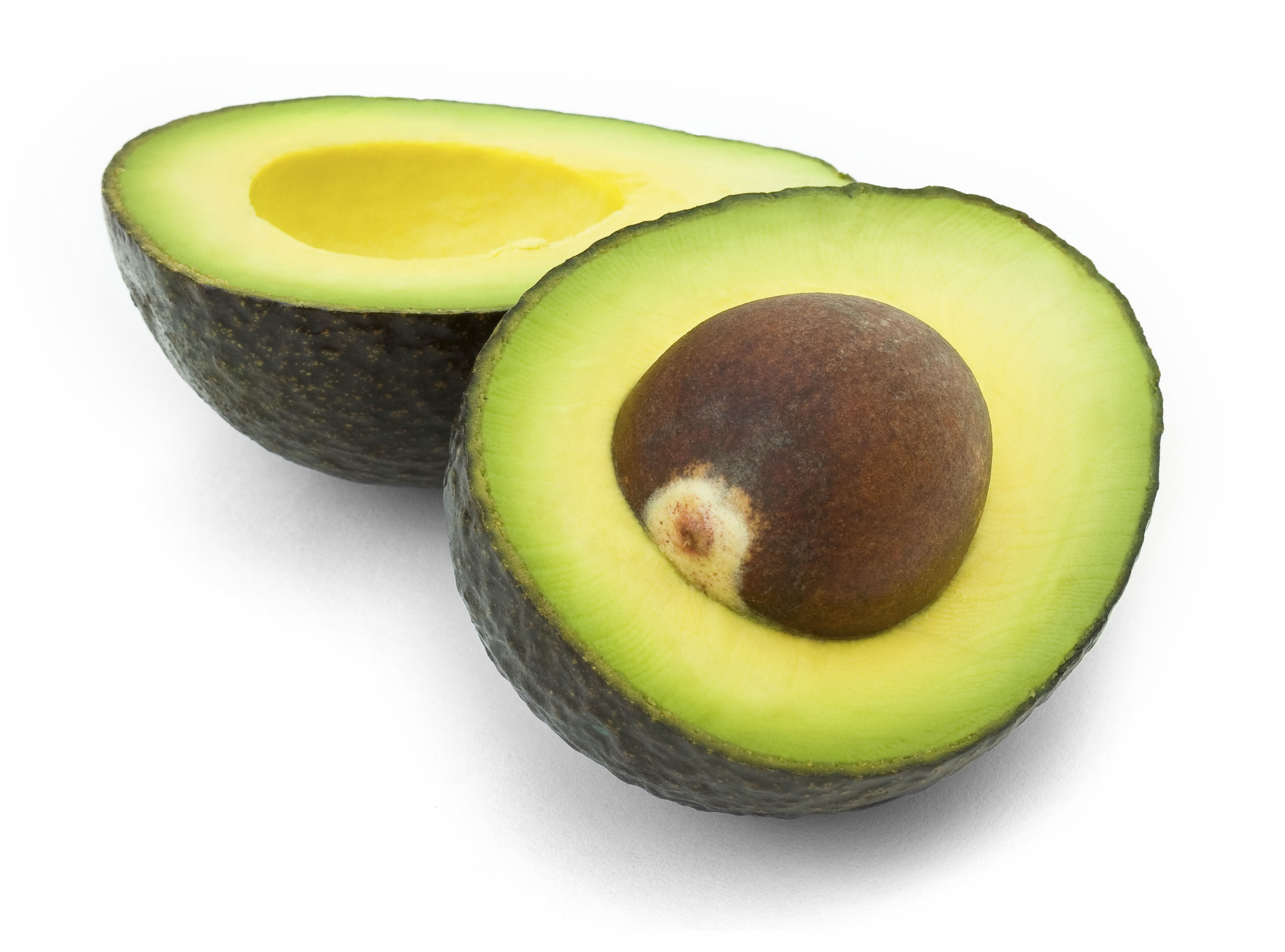Avocados
Avocados are the Best Fruit in the World
Fruit, you say? Why yes... it may be hard to believe, but that tasty green thing is not a vegetable, but a fruit -- berry to be exact.
Eating avocados can regulate your blood pressure.
They have more fat than any other fruit, but don't let that deter you from eating them! Avocados are full of incredibly healthy mono-unsaturated fat. It's the most amazing kind of fat because it is good for your heart.
Avocados are a great source of fiber.
If you're tired of eating beans to get your fiber fix, start eating some avocados. There are 10 grams of fiber in a medium-sized avocado, with 75 percent of that fiber being insoluble (the one that speeds up the digesting process), and the other 25 percent being soluble (responsible for making you feel "full").
Avocados help your body absorb the nutrients from other foods.
One study showed that when avocado is added to salad, the absorption of beta-carotene from carrots increased 13.6 times, and the absorption of alpha-carotene from lettuce increased 4.3 times compared to the same salad eaten without avocado. The reason is because the mono-saturated fat in an avocado helps the body absorb fat-soluble carotenoid phynutrients better.
There is such thing as avocado oil, and it's said to do wonders for your body.
Avocado oil, or fat pressed from the fruit, is similar in form to olive oil. However, when you cook with avocado oil, you could be fighting heart disease, cancer and signs of aging. Research in Mexico has shown that the oil has the power to combat destructive rogue oxygen molecules. These types of molecules are known to destroy cell membranes, proteins and DNA. Avocado oil to the rescue!
Avocados are a much cheaper version of Botox.
That's right, avocados are not only for eating. An avocado can serve as a wonderful moisturizer, treat sunburns by preventing chafing, and it even help reduce wrinkles. Try this easy mask to block wrinkles from forming and to seriously hydrate dry skin: Mix raw honey, yogurt and an avocado together, and then slather it on your face. Hey, Kim Kardashian seems to enjoy it.
Nutrition Information
One cup of pureed avocado (230 grams)
Net Carbs: 19.9 grams - 7%
Dietary Fiber: 15.6 grams - 63%
Protein: 4.5 grams - 9%
Total Fat: 35.4 grams - 55%
Vitamins & Minerals
Vitamin A: 7%
Vitamin C: 34%
Vitamin E: 23%
Vitamin K: 60%
Thiamin: 12%
Riboflavin: 19%
Niacin: 22%
Vitamin B6: 33%
Folate: 51%
Pantothenic Acid: 34%
Avocado Nutritional Information
Avocados are full of magnesium and potassium, two nutrients known to help reduce blood pressure. The avocado provides more magnesium than twenty other fruits, including the banana, kiwi and strawberry.
Avocado Facts and Tips
The avocado's nickname is the "alligator pear."
Because its wrinkled rough green skin looks like an alligator's and it's pear-shaped. When it's cut open, an avocado sort of looks like an alligator's eye, too.
Avocado Tips
Choose ripe avocados to use right away. The skin will be pebbly and almost purplish black. Press gently and your finger should leave a slight indentation.
Choose hard bright-skinned avocados if not using right away. They should ripen in three to four days.
Contrary to popular belief, adding the avocado's pit to a bowl of guacamole is not what keeps your dip fresh and green days after making it. The real trick is adding plenty of lime and lemon juice. It's the exposure to oxygen that turns your guac brown -- lime and lemon juice's acidity slows down the oxidation process.
If you're trying to eat healthier, you can swap in the super-fruit for butter in most recipes for baked goods. Chocolate-chip cookies and banana bread can taste delicious when baked with avocado.
The method you use to peel an avocado can make a difference to your health. Research has shown that the greatest concentration of carotenoids in avocado occurs in the dark green flesh that lies just beneath the skin. You don't want to slice into that dark green portion any more than necessary when you are peeling an avocado.
For this reason, the best method is what the California Avocado Commission has called the "nick and peel" method. In this method, you actually end up peeling the avocado with your hands in the same way that you would peel a banana. The first step in the nick-and-peel method is to cut into the avocado lengthwise, producing two long avocado halves that are still connected in the middle by the seed. Next you take hold of both halves and twist them in opposite directions until they naturally separate. At this point, remove the seed and cut each of the halves lengthwise to produce long quartered sections of the avocado. You can use your thumb and index finger to grip the edge of the skin on each quarter and peel it off, just as you would do with a banana skin. The final result is a peeled avocado that contains most of that dark green outermost flesh so rich in carotenoid antioxidants!

